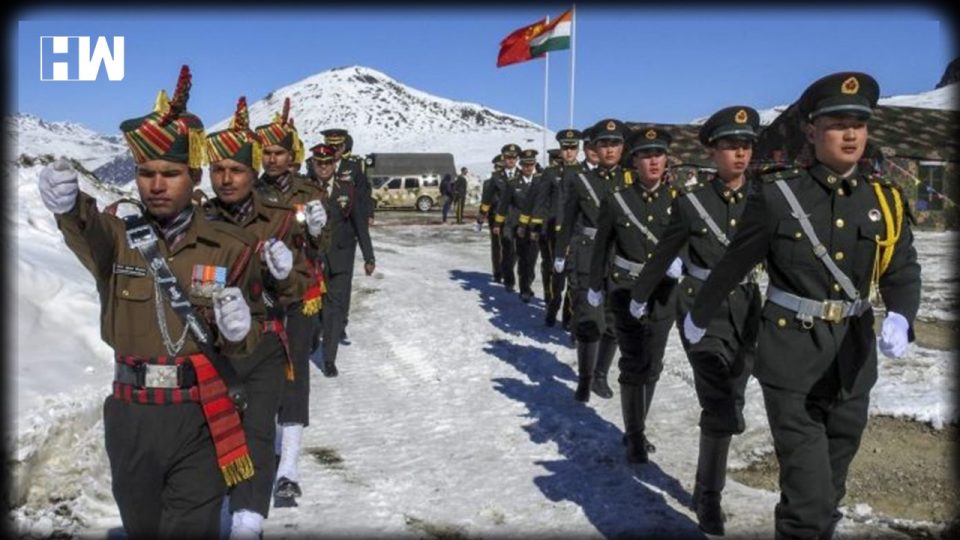The Chinese troops have particularly increased its presence in the Galwan Valley, building around 100 tents in the last two weeks.
New Delhi| In several disputed areas along the Line of Actual Control in Eastern Ladakh, Indian and Chinese troops have been engaged in a conflicted situation, warning that the dispute could become the biggest military face-off after the Doklam episode in 2017.
India has further increased its strength in Pangong Tso and Galwan Valley, top military sources told PTI.
Pangong Tso and Galwan Valley are the two contentious areas where the Chinese army is seen to be deploying around 2,000 to 2,500 troops besides gradually enhancing temporary infrastructure.
“The strength of the Indian Army in the area is much better than our adversary,” a top military official told Press Trust of India.
The presence of Chinese troops around several key points including Indian Post KM120 along the Darbuk-Shayok-Daulat Beg Oldie road in Galwan Valley is the biggest concern for the Indian military.
Chinese transgression into areas like Galwan was worrying as there was no dispute between the two sides in the area, Lt Gen (Retd) Hooda emphasized.
Ashok K Kantha, Strategic Affairs expert Ambassador said that there have been multiple incursions (by Chinese troops). This is something which causes concern. It is not a routine standoff. This is a disturbing situation,
The Chinese troops have particularly increased its presence in the Galwan Valley, building around 100 tents in the last two weeks and bringing in heavy equipment for the development of bunkers.
The Indian troops are conducting to “aggressive patrolling” in several sensitive areas including Demchok and Daulat Beg Oldi, sources told PTI.
In several areas in Ladakh and northern Sikkim along the un-demarcated Sino-India border tension is gradually building up between Indian and Chinese armies with both sides bringing in additional troops.
This comes following two violent face-offs between the neighbouring countries.
Both the Indian and Chinese armies have brought in more troops in sensitive locations like Demchok, Daulat Beg Oldie and areas around Galwan river as well as Pangong Tso lake in Ladakh, the sources said.
Two rounds of talks between Indian and Chinese local military commanders at Pangong Tso, where troops of the two sides came to blows two weeks ago, remained unsettled Tuesday and Beijing warned of “necessary counter-measures”.
Also Read: Amid Coronavirus Uncertainties, People’s Bank Of China Acquires 1% Stake In HDFC
The troops of India and China were engaged in a 73-day stand-off in Doklam tri-junction (India, China, Bhutan) in 2017 which even triggered fears of a war between the two nuclear-armed neighbours.
The India-China border dispute covers the 3,488-km-long LAC. China claims Arunachal Pradesh as part of southern Tibet while India opposes it.
China has been critical of India’s reorganisation of Jammu and Kashmir and has especially criticised New Delhi for making Ladakh a union territory. China attempts to claim various parts of Ladakh.
They also object the construction of a road in the Galwan river area which is well within Indian territory.
PM Narendra Modi and Chinese President Xi Jinping held their first informal summit in April 2018 in the Chinese city of Wuhan, months after the Doklam standoff.
The two leaders in the summit decided to issue “strategic guidance” to their militaries to increase communications so that they can build trust and understanding.
Modi and Xi held their second informal summit in Mamallapuram near Chennai in October last year with a focus on further expanding bilateral ties.
(With Inputs from PTI)
As an independent media platform, we do not take advertisements from governments and corporate houses. It is you, our readers, who have supported us on our journey to do honest and unbiased journalism. Please contribute, so that we can continue to do the same in future.

